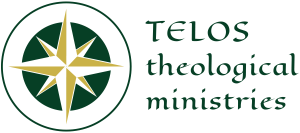Phone: (817) 793-3060
Category Archives: Audio-Academic

Audio Lectures on Matthew: Chapter One
In reading the Gospel of Matthew it is essential that we try to put ourselves back into the context: a context where, as far as the characters were concerned, there was no New Testament in existence. If we think of Matthew as relating to Old Testament promises, we will not be as liable to read our assumptions into what is going on.
The Last Twelve Verses of Mark
Are the closing verses of the Gospel of Mark genuine, or is the evidence against their inclusion so strong that they should be omitted from serious commentaries and sermons?
The Church as a Mystery (Pt.2)
In Ephesians 3 and Colossians 1 the Apostle Paul refers to teaching about the Church as a “mystery” (musterion) . What does he mean by this? Is he saying that the Old Testament saints knew nothing about the New Testament Church? This lecture deals mainly with the claims of so-called “Progressive Dispensationalism”.
The Church as a Mystery (Pt.1)
In Ephesians 3 and Colossians 1 the Apostle Paul refers to teaching about the Church as a “mystery” (musterion) . What does he mean by this? Is he saying that the Old Testament saints knew nothing about the New Testament Church? These two lectures plainly show this to be the case.
New Testament Times (3): Society
This lecture looks at things like taxation and everyday living in Israel.

Jesus’ Kingdom Teaching: Luke (1)
This study tracks the way Jesus Himself spoke about the Kingdom of God. This and the next lecture focus on Luke’s Gospel.
New Testament Times (2): Politics
This lecture looks into the political situation in the Roman Empire in Christ’s day. This background material is taken from the TELOS BIBLICAL INSTITUTE course on “The Four Gospels”
New Testament Times (1): The Land
The story of Jesus took place in a tiny country at the center of the globe
The Synoptic Problem (6): Dating the Gospels
The Gospels of Matthew, Mark, and Luke are referred to as “synoptic” (meaning a common view). But their similarities and differences raise all sorts of questions; questions that have been answered in various ways. These lectures offer a defense of the ‘traditional’ position. The lectures come from the TELOS BIBLICAL INSTITUTE course on “The Four… Continue Reading
There is no content to display.

Audio Lectures on Matthew: Introduction (Pt.2)
The second in a three-part introduction to this Gospel before getting into the Gospel proper. This introductory lesson looks at the content, plan and purpose of this Gospel.
… Continue Reading